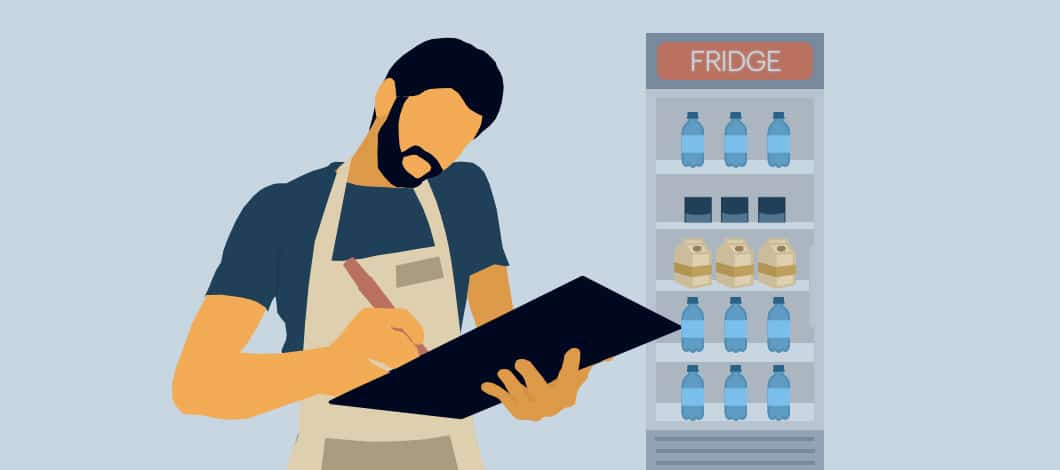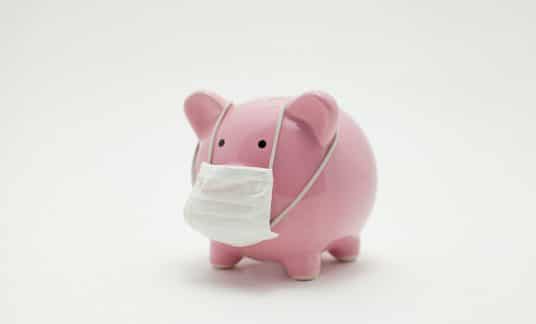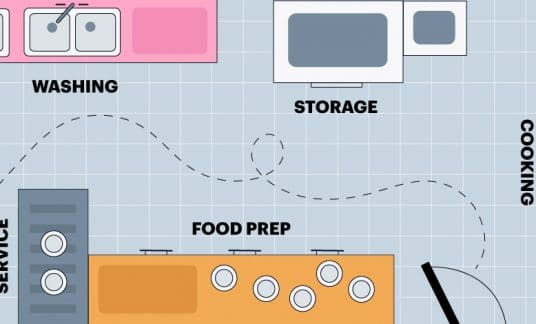Restaurant inventory management isn’t a popular task, but it plays a massive role in your establishment’s profitability.
Consequently, food stock control and the ability to act on your data may give your business a competitive edge. Follow these best practices to manage your inventory and improve restaurant operations.
The Basics of Restaurant Inventory Management
Restaurant inventory management covers every item within your building. While you don’t need to count your silverware every week, you should regularly track food and beverage stock.
Inventory oversight means verifying incoming orders, monitoring sales, accounting for items moved between locations and assessing waste or leftovers.
A point-of-sale (POS) system or restaurant inventory management software determines your theoretical inventory or how much stock was used based on your POS sales.
But an inventory sheet is necessary to catch kitchen waste and spoilage. Completing a physical count and comparing it to your POS data shows where variances exist.
Take control over your inventory by learning the terms below, creating a system and using data to inform business decisions.
Restaurant Inventory: Terms to Know
Although you may handle inventory duties, you may want to shift this task to your general manager as your restaurant grows. Use terms with agreed-upon definitions for consistent and accurate food stock control.
Common words you’ll come across when taking commercial kitchen inventory consist of:
- Sitting inventory: The total amount of products in your restaurant, measured in the quantity of the physical stock or the dollar value. You must pick one method and use it consistently.
- Depletion: The total amount of products used during a specific time frame, calculated using the method you chose for your sitting inventory. POS sales reports provide the data.
- Usage: A formula used to show how long your inventory will last. Take your sitting inventory divided by average depletion to get your usage rate.
- Variance: Also known as shrinkage, variance is the difference between your sales data and your physical inventory count. In short, it shows stock that is unaccounted for.
- Par inventory sheets: A par level defines the ideal amount of stock required for each item at all times. These figures go on the inventory sheet and help managers order the right amount.
- Average inventory turnover ratio: This figure refers to how often your store ran out of stock during a specific period. Numbers below 4 could mean you’re holding onto too much inventory, whereas an 8 or higher may indicate a problem with your ordering process.
- Average daily inventory cost: Your stock is an asset. It’s money you’ve invested and can’t earn back until you sell the products. Find your total inventory cost on your profit and loss statement and divide it by the number of days in that timeframe.
Inventory Spreadsheets vs. Software
Many startups and small businesses start with an inventory sheet and add restaurant inventory management software as the company grows.
A spreadsheet is easy to use but doesn’t provide real-time views, is prone to human error and harder to derive insights from.
Meanwhile, a standalone or integrated inventory platform automates low stock alerts, shows real-time stock levels and helps you visualize your food costs.
However, the best systems use spreadsheets and inventory software. The combination helps restaurateurs identify shrinkage and maintain positive cash flow.

How Food Stock Control Affects Your Restaurant Operations
Food costs are often the highest expense after labor in a restaurant. Failure to manage these costs may reduce profit margins.
Regular stock counts and active management helps restaurateurs identify areas of concern, such as:
- Food waste in the kitchen because of mistakes
- Repeated data entry errors by the front of the house staff (FOH)
- Food waste by restaurant guests may suggest incorrect portions
- Order entry errors resulting in incorrect food orders
- Employee theft of food, liquor or paper supplies
- Over portioning of food or liquor
The Benefits of an Accurate Restaurant Inventory Method
The Restaurant Resource Group and data from the National Restaurant Association’s “Restaurant Industry Operations Report” find food and beverage costs and labor expenses “account for 62 to 68 cents of every dollar in restaurant sales.”
Additionally, Toast’s “Restaurant Success in 2019” shows, “52% of restaurant professionals named high operating and food costs a top challenge.”
Restaurant owners can get a handle on food costs and menu prices by managing their inventory. Restaurant inventory management offers several advantages, including:
- Catch potential problems, such as theft, before they affect your bottom line
- Avoid over or under ordering and decrease spoilage
- Gain insights from real-time reports to find patterns
- Improve cash flow by not tying up too many funds in unused inventory
- Develop better portion control and know when to increase menu prices
Restaurant Inventory: 7 Tips and Best Practices
Although small business inventory management may differ from enterprise control, all companies benefit from following these best practices:
1. Develop a Food and Beverage Inventory Template
A food and beverage inventory template is easy to use. You can find one for free online or through your spreadsheet software.
Typically, restaurants use an inventory sheet to count physical stock and an inventory consumption spreadsheet to identify daily use, costs and waste.
Both forms use food categories to make the spreadsheet easier to use. Items may include paper goods, bread, liquor, beer, wine and meat or seafood.
An inventory sheet provides data, such as:
- The time frame tracked
- Unit of measure
- Quantity in stock
- Unit cost per measurement
- Stock value per item
- Total inventory value
On the other hand, an inventory consumption spreadsheet uses the above data and adds details relating to daily use, such as:
- Beginning inventory
- Ending inventory
- Amount used per ingredient
- Waste quantity
- Waste cost
- Daily consumption rate
2. Look for Integrated Inventory Management Solutions
End-to-end inventory management solutions refer to systems that support food stock control methods while integrating with POS and accounting platforms.
Using an all-in-one or integrated platform enables restaurateurs to auto-update ingredient costs and upload vendor invoices.
Many POS systems offer basic inventory features and support barcode scanners. Others, such as TouchBistro, alert your servers if a menu item is running low based on an ingredient list.
However, some programs support third-party integrations as well. Restaurant owners may use the tools as standalone inventory trackers, such as BevSpot or MarketMan, or integrate them with their current POS system.
3. Focus on Employee Training and Management
Your employees can directly affect your inventory, for good or bad.
Empower your manager to be proactive and aware while demonstrating empathy with team members, whether they’re new to the industry or long-time staffers.
After all, there are always small opportunities to draw attention to good habits, such as giving 5 extra napkins to a table versus a thick stack. There’s also correcting team members who hand out ketchup packets like they’re penny candy.
A great manager runs their eyes over kitchen garbage cans, looking for signs of potential waste. They also run regular reports to see if any front-of-house (FOH) staff repeatedly place incorrect orders requiring a deletion.
Additionally, managers should keep their eye on the kitchen to ensure crew members are:
- Using the first-in, first-out (FIFO) method when putting away incoming inventory orders
- Adding food labels and dates for opened products
- Filling out a food waste sheet for spoilage and kitchen errors
4. Keep Your Stockroom and Coolers Organized
Avoid staff frustration and counting errors by organizing your cold and dry storage areas.
Labels are your friend here. Add them to the edges of shelves with arrows showing if they go on the top or bottom shelf.
You also may want to develop an inventory identification system or use barcodes for items to make it easier to scan stock for your restaurant inventory management software.
Lastly, group items by categories as much as possible. It’s simpler to count all paper goods at once instead of jumping between to-go containers to gallons of salad dressing.
5. Realize a Return on Your Inventory Management Software
The thought of adding another monthly technology subscription may not delight you. But it’s possible to realize near-immediate savings.
For instance, recipe costing helps you calculate your menu items down the ounce and the penny. However, it’s difficult and time-consuming to attempt with a spreadsheet.
An integrated inventory, accounting, and POS solution compare stock against sales to show the yield of each item.
Restaurant owners use this data and physical counts to forecast sales, identify trends and decide what, when and how much to order.
6. Create a Regular Schedule for Commercial Kitchen Inventory
Many restaurants run spot checks once or twice a week. But you may want to count alcohol nightly and perishables every morning before opening.
It’s best only to count inventory before you open or after you close because any open orders may result in incorrect figures.
Moreover, the same one or two people should handle your restaurant inventory management. This improves accountability and helps keep people on the same page.
7. Treat Restaurant Inventory as Assets
Every dollar invested in stock is 1 less dollar in the bank. Many restaurants receive 1 or 2 stock deliveries a week and keep roughly 5 to 7 days of food and paper supplies.
But it’s a good idea to keep high-volume items in stock as running out of toilet paper rendering your restrooms useless can shut down your business.
Of course, extra supplies were handy in 2020, with many eateries giving away toilet paper with their to-go orders or selling it alongside popular grocery items.
However, if you have liquor bottles with a 3-inch layer of dust on them, have a low average inventory turnover ratio or a high average daily inventory cost, consider adjusting your inventory management process.
Get a Handle on Your Inventory to Improve Profitability
Restaurant inventory management is rarely an activity that owners or managers do for fun. But the right tools make it easier and more accurate.
Track your inventory as closely as you monitor your sales, and you’ll be a step ahead of your competitors when costs rise.











